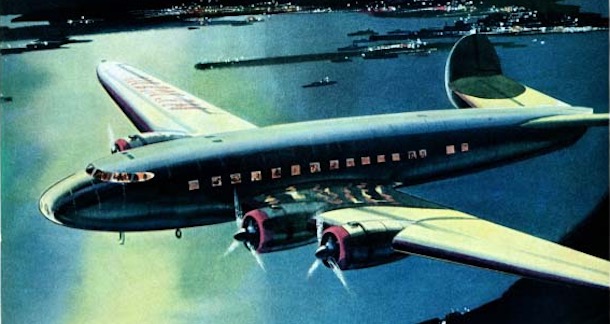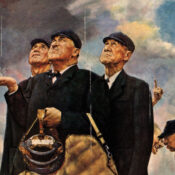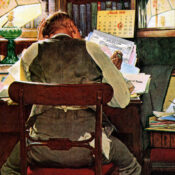America has always been in love with the concept of flight. From the first bi-planes to futuristic bombers, these Post covers fly you through a short history of aviation.
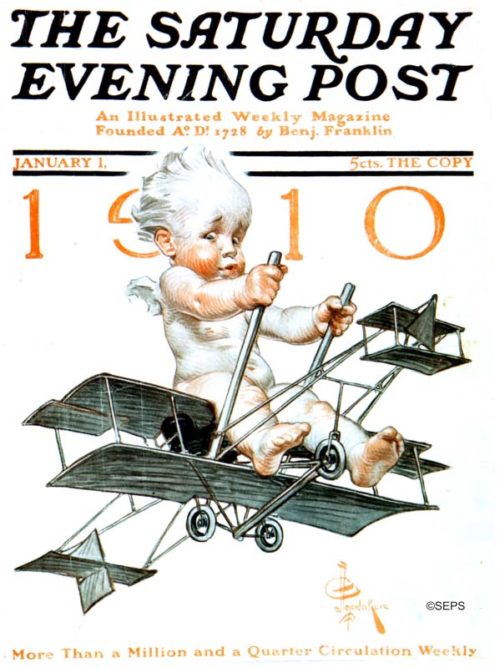
By J.C. Leyendecker
January 1, 1910
J. C. Leyendecker painted numerous “Baby New Year” covers, which often narrated the issue of the day: The 1910 baby flew a new-fangled bi-plane. The 1912 baby carried a “Votes for Women” sign. And 1914’s tot cruised the soon-to-be-opened Panama Canal. The worried face of our bi-plane baby reflects the trepidation many had about this brand-new mode of travel.
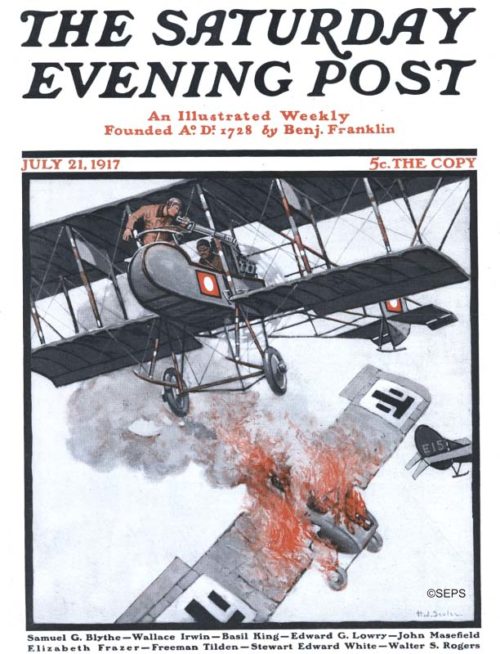
Henry J. Soulen
July 21, 1917
This dramatic aerial scene from a World War I dogfight depicts the moment of victory. Air combat was extremely rare at the beginning of the first world war. Although there was some tactical use of planes during the war, they were mostly used for reconnaissance. Over the course of the war, air battles evolved from grenades to handheld firearms, and eventually machine guns. The victorious plane has a pusher configuration, where the propeller is located behind the pilots. This solved the problem of the propeller interfering with the gunner’s line of sight.
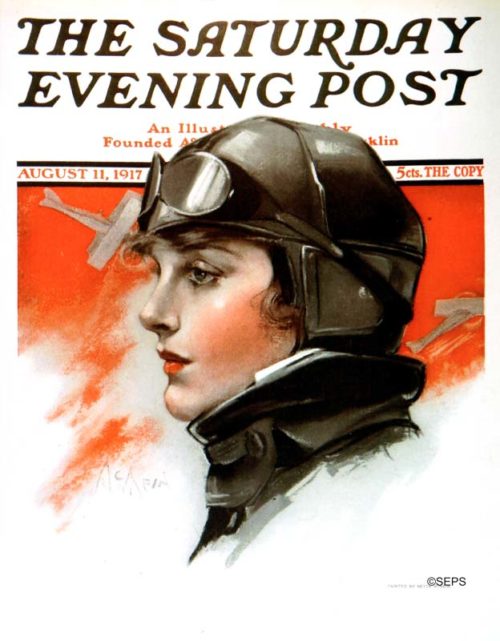
Neysa McMein
August 11, 1917
Neysa McMein got her start as an illustrator during World War I, travelling across France with Dorothy Parker to entertain the troops. She is known for creating the “Betty Crocker” image for General Mills, but this cover, as well as her inclusion in the Algonquin Roundtable, suggests a life that was perhaps more progressive than the fictional Mrs. Crocker’s.
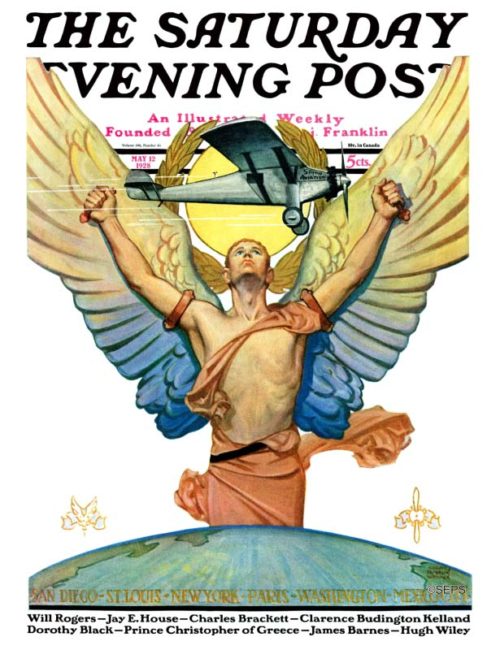
Edgar Franklin Wittmack
May 12, 1928
Edgar Franklin Wittmack was one of the top magazine cover illustrators from the 1920s to the 1940s, whose resume would include 22 Post covers. Wittmack’s covers often featured manly men — cowboys, mariners, Mounties, and movie stars —striking a jaunty pose for the portraitist. This ethereal, deco-style illustration was somewhat of a departure from his other Post covers.
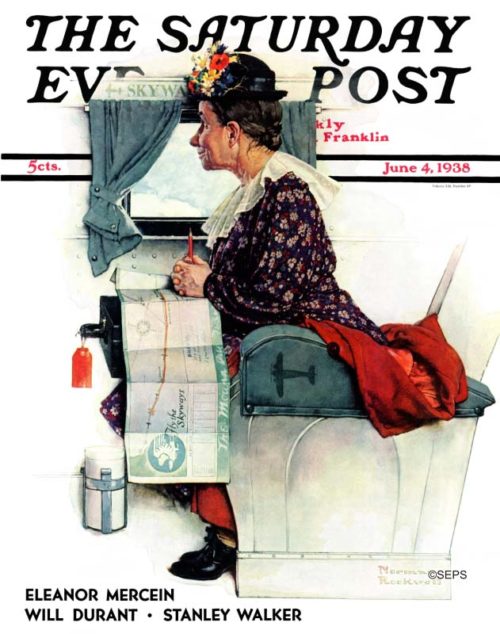
Norman Rockwell
June 4, 1938
Although this Rockwell illustration doesn’t feature a plane’s exterior, we couldn’t help but include this charmer. This eager first-time traveler gazes out the window, the route painstakingly traced out on her “Fly the Skyways” map. The rich narrative quality of the scene is the hallmark of Rockwell’s most compelling images.
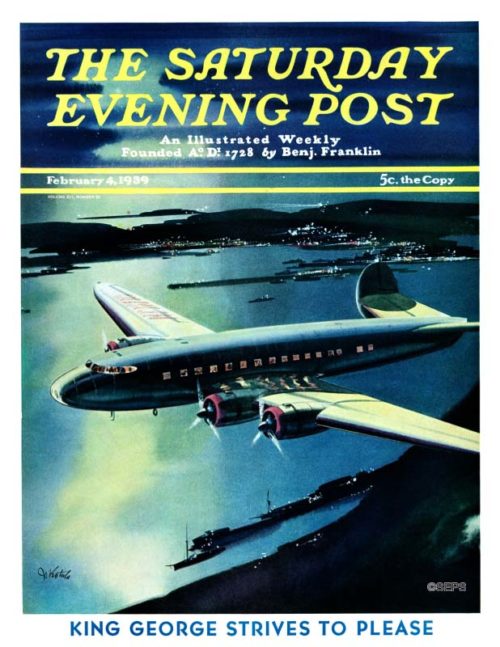
By Josef Kotula
February 4, 1939
This dramatic night scene is the only cover Josef Kotula painted for the Post. Kotula was known for his futuristic aviation and spaceship illustrations.
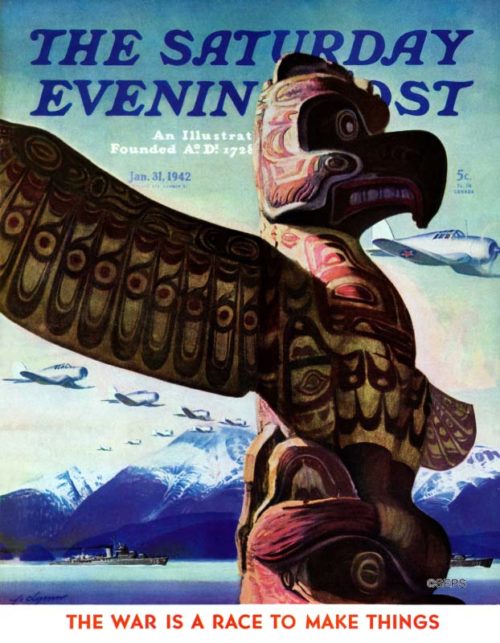
John Clymer
January 31, 1942
The U.S. had just entered World War II, and Clymer dramatically illustrated America’s commitment to protecting its Pacific shores. Both warships and planes glide across the dramatic backdrop of the Alaskan frontier, as the totem pole stands guard in the foreground, ever vigilant for invaders.
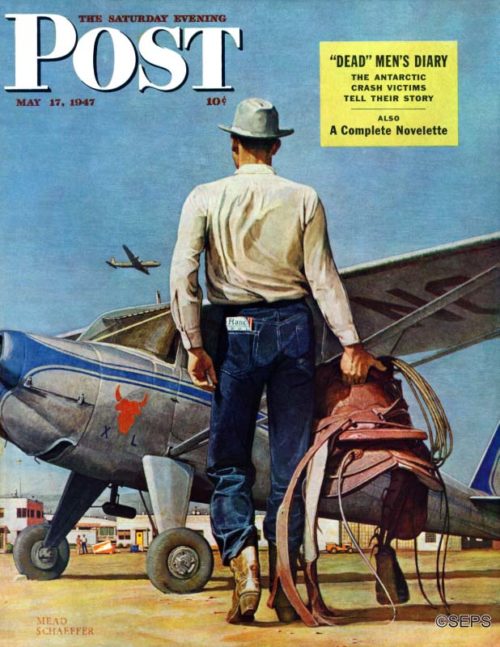
Mead Shaeffer
May 17, 1947
“The cowboy carrying his pet saddle to his plane is an everyday sight in the West,” artist Mead Schaeffer wrote when he delivered this painting. “Many a rancher lives in town and commutes to his ranch or ranches by air. The tableland makes landing fields all through the West, and because of the long distances involved, the West takes to planes the way the East take to cars. Many a business engagement, even luncheon engagements, are kept this way.” One of the flying ranchers, Lee Bivins, was Schaeffer’s model. The background is the airport at Amarillo, Texas.
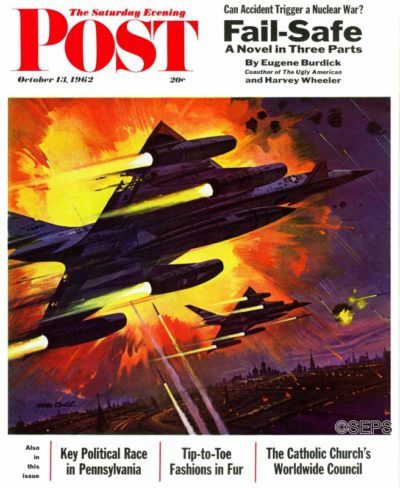
Robert McCall
October 13, 1962
This cover by Robert McCall accompanied a serialization of the book Fail-Safe, which described what might happen if a communications breakdown should cause nuclear-armed bombers to fly past their point of recall. The illustration depicts American bombers approaching Moscow, which is more obvious when one sees the two-page fold-out cover in its entirety. The Post editors wrote, “Accidental warfare is a valid subject for consideration in these cold-war days, and we would do well to keep in mind the grave problems facing the President—and all of us—in keeping the peace.”

Become a Saturday Evening Post member and enjoy unlimited access. Subscribe now
